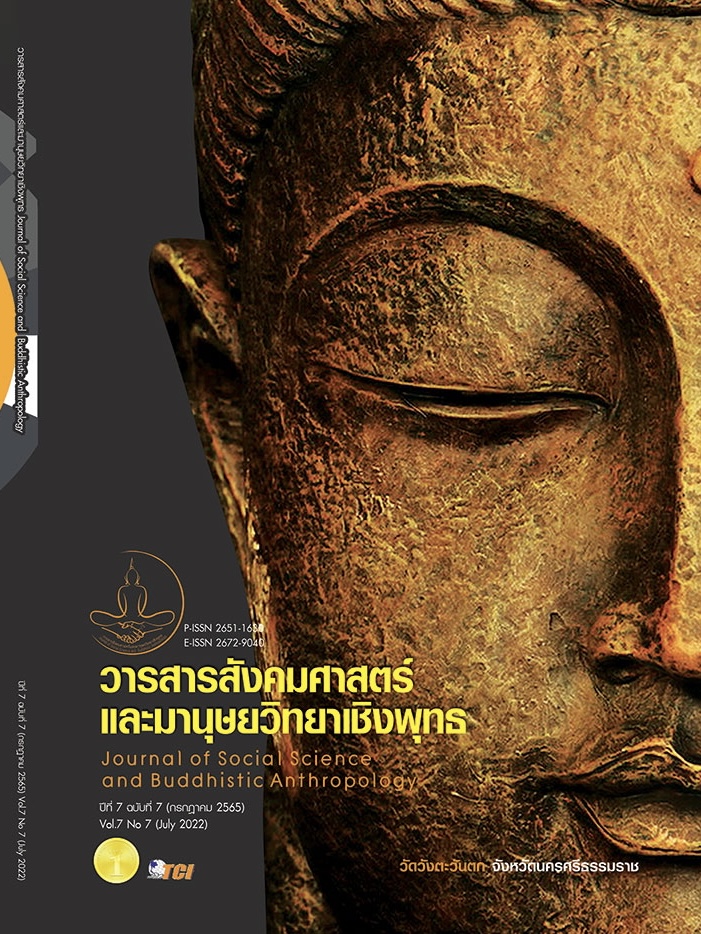FACTORS AFFECTING DIGITAL LITERACY OF THE AVIATION LABOUR FORCE IN EASTERN ECONOMIC CORRIDOR
Keywords:
Digital Literacy, Aviation Force, Eastern Economic Corridor, Media Usage BehaviourAbstract
The objectives of this research article were to analyse, and correlation the factors affected the digital literacy of the aviation labour forces in EEC. It was quantitative research, and the instrument was a questionnaire. The population is 4,618 people who worked in the aviation industry in the EEC. The sample was 357 aviation labour forces in EEC. The inferential statistics were used to test the hypothesis used to analyse the factors affected the digital literacy of the aviation labour forces, and the multiple regression analysis was used to analyse the correlation of the factors affected the digital literacy of the aviation labour forces. The results were found 1)The digital media usage behaviour, the performance and innovation effort expectancy, social influence, and facility condition correlated with the digital literacy of the aviation labour forces at the significance level of 0.05 2)The results of the multiple regression analysis were found that the media usage behaviour, the performance, and innovation effort expectancy and facility condition correlated with the digital literacy of the aviation labour forces at the significance level of 0.05. Those variables explained the variation of the digital literacy of the aviation labour forces at 44.8%. The most affected variables were the performance and innovation effort expectancy (.659), the media usage behaviour (.198), and the facility condition (.129) respectively.
References
กระทรวงแรงงาน. (2560). สถานการณ์และการเตือนภัย ด้านแรงงาน ปี 2560 ( มกราคม - ธันวาคม 2560). กรุงเทพมหานคร: กระทรวงแรงงาน.
กระทรวงแรงงาน. (2561). แผนแม่บทด้านแรงงาน (พ.ศ. 2560 - 2564). กรุงเทพมหานคร: กระทรวงแรงงาน.
สำนักงานคณะกรรมการนโยบายเขตพัฒนาพิเศษภาคตะวันออก. (2561). โครงการพัฒนาระเบียงเศรษฐกิจ พิเศษภาคตะวันออก (อีอีซี). เรียกใช้เมื่อ 19 มิถุนายน 2561 จาก https://www.eeco.or.th/
สำนักงานคณะกรรมการพัฒนาการเศรษฐกิจและสังคมแห่งชาติ. (2562). ดัชนีความก้าวหน้าของคน ปี 2562. กรุงเทพมหานคร: กองพัฒนาข้อมูลและตัวชี้วัดสังคม สำนักงานคณะกรรมการพัฒนาการเศรษฐกิจและสังคมแห่งชาติ.
สำนักงานเลขานุการของคณะกรรมการยุทธศาสตร์ชาติ. (2561). ร่างยุทธศาสตร์ชาติ (ฉบับเสนอสภานิติบัญญัติแห่งชาติ). กรุงเทพมหานคร: สำนักงานคณะกรรมการพัฒนาการเศรษฐกิจและสังคมแห่งชาติ.
Abima, B. et al. (2021). Relevant local content, social influence, digital literacy, and attitude toward the use of digital technologies by women in Uganda. Gender, Technology and Development, 25(1), 87-111.
Chromjakova, F. (2018). Digital literacy of employees in production process–Analyze of production stability and productivity in INDUSTRY 4.0 concept. In AIP Conference Proceedings (Vol. 2044, No. 1, p. 020014). AIP Publishing LLC.
Galina, M. (2016). Media culture and digital generation. International journal of media and information literacy, 1(2), 116-121.
IFS. (2017). The route to perspective on digital change. Retrieved July 14, 2018, from http://www.ifsworld.com/corp/sitedore/medialibrary/assets/2017/06/21/ifs-digital-change-survey/
Krejcie, R. V. & Morgan, D. W. (1970). Determining sample size for research activities. Educational and psychological measurement, 30(3), 607-610.
Li, J. et al. (2018). Research on dynamic facility layout problem of manufacturing unit considering human factors. Retrieved April 29, 2020, from https://www. hindawi.com/journals/mpe/2018/6040561/
Venkatesh, V. et al. (2003). User acceptance of information technology: Toward a unified view. MIS quarterly, 27(3), 425-478.
Downloads
Published
How to Cite
Issue
Section
License
Copyright (c) 2022 Journal of Social Science and Buddhistic Anthropology

This work is licensed under a Creative Commons Attribution-NonCommercial-NoDerivatives 4.0 International License.








